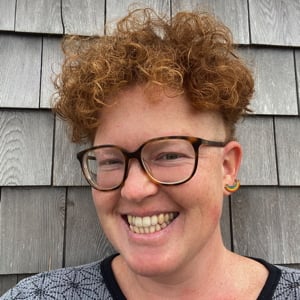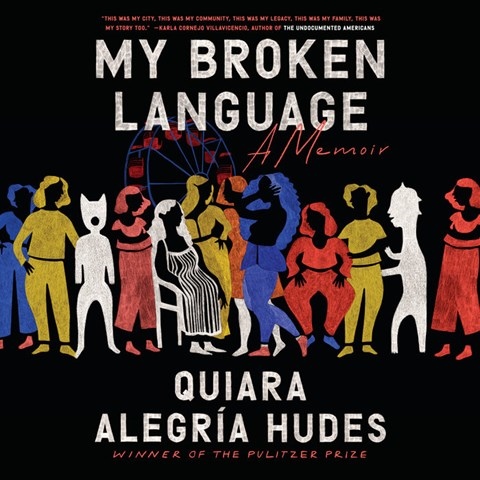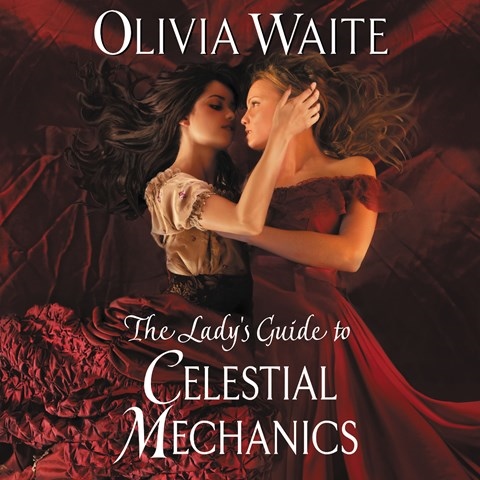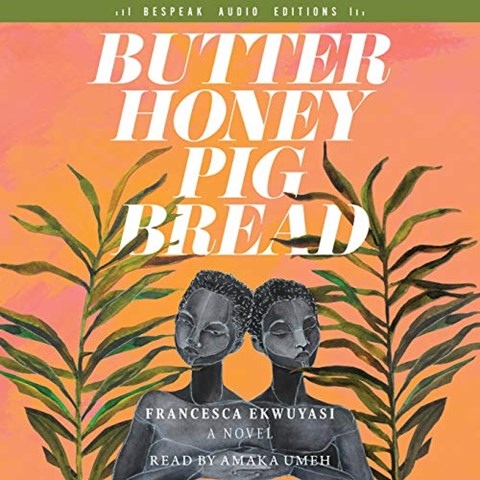 Before diving into this month’s article, I wanted to introduce myself. My name is Laura Sackton, and I’m a freelance writer and book reviewer, and listening to audiobooks is a crucial part of my reading life. I’ve been reviewing for AudioFile for a year and a half, and I’m thrilled to be joining the team of contributors with this monthly column.
Before diving into this month’s article, I wanted to introduce myself. My name is Laura Sackton, and I’m a freelance writer and book reviewer, and listening to audiobooks is a crucial part of my reading life. I’ve been reviewing for AudioFile for a year and a half, and I’m thrilled to be joining the team of contributors with this monthly column.
Each month, I’ll be writing about three audiobooks across diverse genres that explore the same theme. Themed reading has recently become one of my favorite ways to experience books. A poetry collection, a memoir, and a space opera might all be about the grief of losing a parent, for instance, but each one will offer its own perspective on the subject. Listening to books as disparate as sci-fi and memoir and then drawing connections between them enriches my reading immensely. I hope that through this column, you’ll not only discover new audiobooks to fall in love with, but new ways to think about what books have to say to each other, and to us.
This month, I want to highlight three recent audiobooks—a memoir, a novel, and a romance—that explore the challenges, joys, and complexities of being a woman artist. Listening to audiobooks often helps me understand something in the text I might have missed if I'd read it in print. The narrators of all of these audiobooks bring the art in them to life.
 Earlier this year, I listened to playwright Quiara Alegría Hudes’s exuberant and thoughtful memoir, MY BROKEN LANGUAGE, narrated with the buoyancy and raw emotional honesty that comes when an artist reads their own work. Hudes reflects on her childhood, the women in her big Puerto Rican family, and coming-of-age as a playwright. She writes about the alienation she felt when her family moved from North Philly to a horse farm in rural Pennsylvania. She recounts searching for spiritual meaning in Quaker meeting houses, classical music, and her mother’s Santeria practice. She examines how the crack and AIDS epidemics of the 1980s affected her family.
Earlier this year, I listened to playwright Quiara Alegría Hudes’s exuberant and thoughtful memoir, MY BROKEN LANGUAGE, narrated with the buoyancy and raw emotional honesty that comes when an artist reads their own work. Hudes reflects on her childhood, the women in her big Puerto Rican family, and coming-of-age as a playwright. She writes about the alienation she felt when her family moved from North Philly to a horse farm in rural Pennsylvania. She recounts searching for spiritual meaning in Quaker meeting houses, classical music, and her mother’s Santeria practice. She examines how the crack and AIDS epidemics of the 1980s affected her family.
Underneath all of these stories is the larger story of a woman creating her own language, a language built from all the pieces of herself: the music of North Philly, her love of books, Spanish and English. It’s a memoir about the act of creation itself. Hudes’s narration, full of laughter and tinged with music, reflects this sometimes arduous and sometimes joyful experience. The audiobook ends with a powerful scene in which Hudes writes a play inspired by the women in her family. For Hudes, being a woman artist means honoring the women who have made her who she is. Her journey into womanhood and artistry are one and the same.
BUTTER HONEY PIG BREAD by Nigerian writer Francesca Ekwuyasi and narrated by Amaka Umeh takes a different approach to the role art plays in women’s lives. While MY BROKEN LANGUAGE is about a deliberate journey toward becoming a woman artist, BUTTER HONEY PIG BREAD is about how art can quietly slip into a life and change it. The novel follows twin sisters Taiye and Kehinde, who were close as children but are estranged as adults. As they navigate life on different continents, they both eventually stumble into art as part of their slow journey toward healing and forgiveness.
At school in London, Taiye begins cooking for herself and friends. She eventually ends up at culinary school, and when she goes back to Lagos for the first time in ten years to visit with Kehinde and their mother, she expresses herself through food. She never calls herself an artist, but she is one. Ekwuyasi’s descriptions of the food Tayie cooks are lush and immersive, as is Umeh’s narration, which comes alive during the food scenes. All the attention that Taiye puts into her cooking comes through in Umeh’s rich voice. What begins as something Taiye is merely good at becomes a form of self-expression, and then a way of interacting with the world. Food is not just her love language; it’s her language, full stop.
Kehinde, too, is an artist, though she becomes one accidentally. After a miscarriage, she begins writing, and then drawing, as a way to process her grief. But she goes on painting long after that grief has faded into the background. Both Kehinde and Taiye use art to work through their own emotions, and in doing so, their art becomes something bigger than either of them.
 Taiye and Kehinde’s different relationships with art got me thinking about a historical romance I listened to last year, THE LADY'S GUIDE TO CELESTIAL MECHANICS by Olivia Waite. This thoughtful, feminist love story stars two women artists in Regency England: Lucy, an astronomer and translator, and Catherine, an accomplished embroider and fiber artist. Narrator Morag Sims gives a wonderful performance that highlights Lucy and Catherine’s unique personalities, and the care they each take in their work.
Taiye and Kehinde’s different relationships with art got me thinking about a historical romance I listened to last year, THE LADY'S GUIDE TO CELESTIAL MECHANICS by Olivia Waite. This thoughtful, feminist love story stars two women artists in Regency England: Lucy, an astronomer and translator, and Catherine, an accomplished embroider and fiber artist. Narrator Morag Sims gives a wonderful performance that highlights Lucy and Catherine’s unique personalities, and the care they each take in their work.
Like Taiye and Kehinde, Lucy and Catherine are not traditional artists. Catherine creates stunning embroidered dresses and other clothing. She’s a talented artist, but the patriarchal values of the world she lives in have conditioned her to view her art as a mere hobby. Lucy is an astronomer who grew up in the shadow of her famous scientist father, always treated as if she couldn’t possibly make meaningful contributions to science. When Catherine hires her to translate a famous French astronomy text, the two women see each other as artists, even if the world around them doesn’t. This shared understanding, the respect they offer each other in the face of ridicule, is at the heart of their romance.







